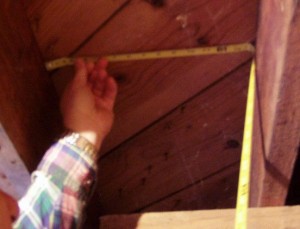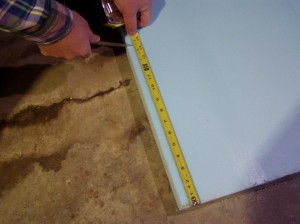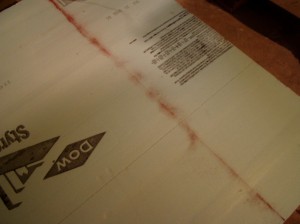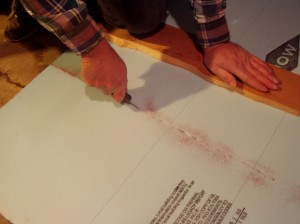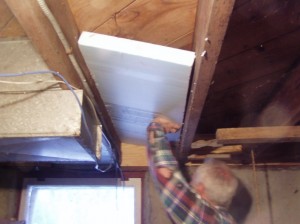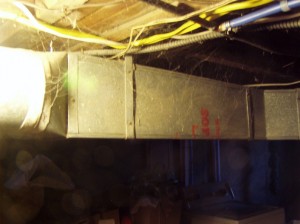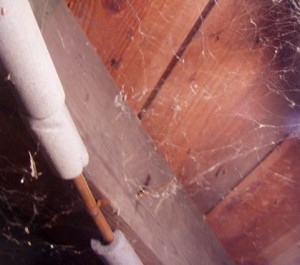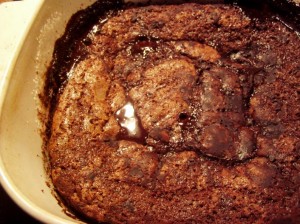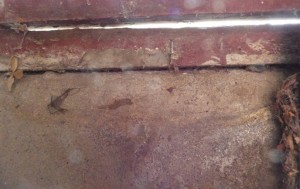 In the photo, what you are seeing is the light of day, streaming through the crack between one of the windows in the basement at Chez Siberia, and its frame. Then, underneath the frame itself, you see a line – that’s the seam between the frame and the concrete foundation.
In the photo, what you are seeing is the light of day, streaming through the crack between one of the windows in the basement at Chez Siberia, and its frame. Then, underneath the frame itself, you see a line – that’s the seam between the frame and the concrete foundation.
As far as energy is concerned, I may as well just open the window this winter and let the let all the cold in. We will not discuss why we are, all of a sudden, paying some attention to the windows in our basement. Like everyone else, it’s ‘down there’ and we don’t think about them much. For anyone who has a furnace in the basement, however, it might be a really good idea to check (and it’s easy enough – just do what I did, go down to the basement during the day, keep the lights in the basement off and check around the edges of the windows – if you see light from outside, then you have a leak going on there.
So. What to do now? It’s October!!!
Well, first thing is that it’s not that cold yet – as a matter of fact, here in the eastern half of the US, next week, it’s going to be positively balmy. Any temperatures over 55 degrees F. and you are good to go to seal up those cracks with silicone caulk, spray foam (the cans with the little pipette tube at the end are great to get the foam EXACTLY where you want it, rope caulk and the like. ‘
The first question you need to ask yourself is this: Do we EVERY open these windows? EVER? OK, so if your basements floods every spring and you need to get fresh air inside to dry things out, you might need to open the windows, but a lot of people do NOT ever open their basement windows. They are merely there to provide some ambient light. If you open the windows (or only certain windows), then use rope caulk like this. You just split the roll into the little ropes and press them, a piece at a time, around the seam around the window frame. Then, in the spring if you need to open that window, you are good to go; just pull out the rope.
However, if you only need to open one or perhaps two windows in your basement, I’d advise a) using rope caulk on those and then sealing up the rest with caulk or spray foam. First, examine the windows themselves. Are there loose panes of glass and so on? Well, the best method is to take out the window and repair the caulking around the glass panes. That will require you to chip or scrape out the old caulking (and you may break a pane, which is…a pain), and then putting in NEW caulking. Or, you could take the lazy person’s route and get a couple of pieces of plexiglass sized to cover the window, screw those in and the window panes are sealed. Then shut the window firmly (you might need a shim or some other stuffing to get it to hold tightly in the frame) and seal around where the window meets the frame with spray foam or silicone caulk.
And what about that seam between the frame of the window and the foundation – Ditto. Seal that baby up with caulk or foam. Remember: even if you do everything upstairs from first floor to the roof to keep the warm air in and the cold air out, if you have not sealed up the seam between the foundation and the sill in the basement, you may as well just leave those windows open all winter long. Wastes a lot of energy AND it makes the floors on the first floor feel very cold.
Until next time…
